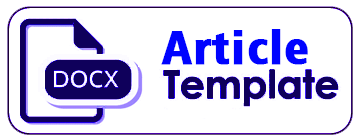Copyright & License
The SIMAKS journal follows specific guidelines regarding copyright and licensing for the works it publishes. Typically, academic journals have a policy to ensure that authors retain certain rights to their work, while granting the journal the right to publish and distribute it. Here are some common points that journals follow:
-
Copyright:
-
The authors generally retain the copyright to their work after publication, unless explicitly transferred to the journal. In such cases, the author might grant the journal a license to publish the work and distribute it in various formats (e.g., print, online).
-
In some cases, the journal may require authors to assign the copyright to the journal, allowing them to control the distribution and reproduction rights.
-
-
License:
-
Many journals adopt an open-access model, where articles are available to everyone for free. In such cases, the journal may use a Creative Commons License (like CC BY) that allows others to freely distribute, remix, and adapt the content as long as the original work is properly cited.
-
For journals that are not open access, authors may be required to submit the work exclusively to that journal for a period of time, ensuring no simultaneous publication elsewhere.
-
-
Usage Rights:
-
Authors are often allowed to use their own works for non-commercial purposes, such as inclusion in their academic portfolios or in further research publications. However, they must acknowledge the original publication in the journal.
-
-
Third-Party Content:
-
If a manuscript includes content (like figures or data) that is copyrighted by a third party, the author is usually required to get permission from the copyright holder and include proper attribution.
-
To confirm the specific details of SIMAKS's copyright and licensing policies, it is best to refer to the journal's "Copyright & License" or "Author Guidelines" section on their website, which should provide precise instructions on how copyright is handled for their publications.





